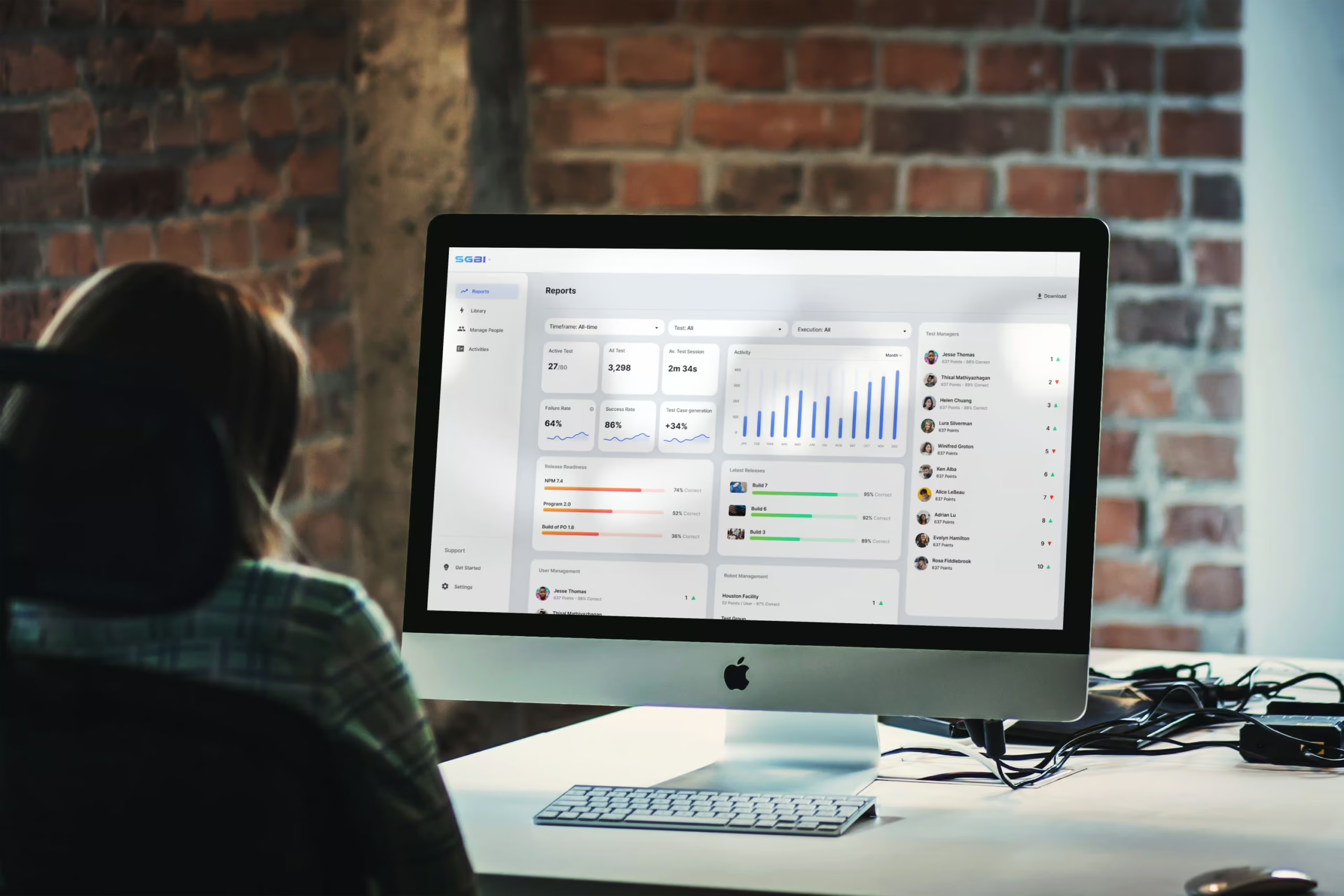Smart robots are no longer just industrial machines used on factory floors. They have become integral to how consumer technology evolves, performs, and adapts to user behavior.
Whether it is your smartphone, fridge, smartwatch, or gaming console, robotic automation is now responsible for much more than production. It influences how devices are tested, refined, and released.
These intelligent systems interact with hardware and software at scale, replicating real-world usage and helping ensure the technology you use feels natural, fast, and reliable.
Table of Contents
The Rise of Smart Robotics in Tech
Smart robotics has evolved from mechanical automation into a new layer of embedded intelligence within tech workflows.
Today’s robots go beyond physical tasks like assembling components or packaging devices. They actively support quality assurance, interface testing, and continuous behavioral modelling.
AI-driven robotic systems are designed to simulate user inputs, environmental shifts, and usage patterns across devices.
These robots learn from interaction data and apply consistent pressure, motion, and gesture simulations. Their job is not just to test performance but to teach products how to handle real-world conditions before reaching consumers.
Where You Encounter the Impact
You interact with smart robots more often than you think, indirectly, through the products they help perfect.
- Smartphones & Tablets: Robotic arms simulate taps, swipes, and multi-touch gestures to test responsiveness and durability.
- Wearables (Smartwatches, Fitness Trackers): Robots stress-test motion sensors, biometric readings, and material durability under real-life conditions.
- Smart Home Devices: Robots replicate years of household use, testing thermostats, fridges, and other appliances for long-term reliability.
- Vehicles (Infotainment Systems): Robotic inputs ensure precise response to gestures, multi-touch controls, and haptic feedback.
- Healthcare Devices: Robotic testers validate the accuracy of readings, UI responsiveness, and sensor calibration.
- Aviation Interfaces: Robots perform precision testing to simulate cockpit interactions, ensuring flawless performance under extreme conditions.
Each of these examples reflects how smart robots test device behavior far beyond what manual QA teams can manage. These machines operate at high speeds, under variable conditions, and without fatigue.
How Are These Devices Tested? (Behind the scenes)
Behind every polished consumer device is a complex robotic testing system operating silently in the background.
Most users never see it, but it is what ensures reliability, consistency, and usability across every screen, sensor, and surface.
Smart robots simulate how real people interact with devices but do it thousands of times without fatigue. In testing labs, robotic arms perform screen taps, pinches, and scrolls with exact pressure and speed.
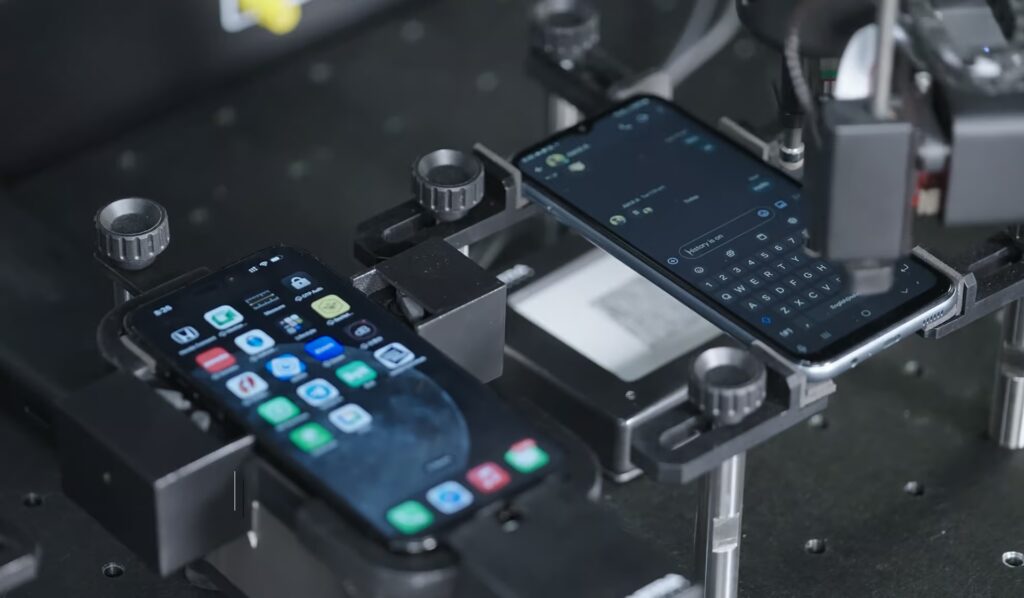
They respond to voice inputs, swipe under different lighting conditions, and trigger sensors using controlled stimuli.
- Devices like smartphones and wearables are mounted in automated rigs that replicate months of daily use in hours. These rigs flex wristbands, tilt displays, or simulate hand movements to validate functionality across multiple physical states.
- In-home devices, robotic testers use mechanical precision to open and close refrigerator doors, adjust smart thermostats, and press appliance buttons.
- Infotainment systems in vehicles undergo nonstop robotic inputs to verify gesture response, haptic feedback, and multi-zone controls.
No user ever sees the hours of robotic testing that go into confirming that every swipe is smooth, every command is recognized, and every interface behaves exactly as expected. This invisible layer of robotic QA is now a standard part of delivering modern consumer electronics.
Why Robotic Testing Matters More Than Ever
Modern devices are smaller, more intelligent, and equipped with increasingly sensitive components.
They combine hardware, firmware, and cloud-connected software into compact ecosystems that must perform flawlessly. Whether it’s a smartwatch tracking vitals or a touchscreen panel controlling a vehicle, users expect perfection instantly and always.
As development cycles shorten, testing becomes more complex and time-bound. Manual QA teams struggle to keep up with growing variations, use cases, and hardware-software interactions. Even minor inconsistencies can lead to major customer dissatisfaction.
Smart robots bridge this gap with unmatched speed, accuracy, and consistency. They ensure:
- Repeatable, high-volume testing without variation or fatigue
- Precision input simulation across sensors, touchscreens, microphones, and pressure-sensitive surfaces
- Accelerated validation of firmware and app updates across multiple hardware generations
- Human-like interaction modeling over thousands of cycles under changing conditions
- Round-the-clock coverage without a drop in performance or attention to edge cases
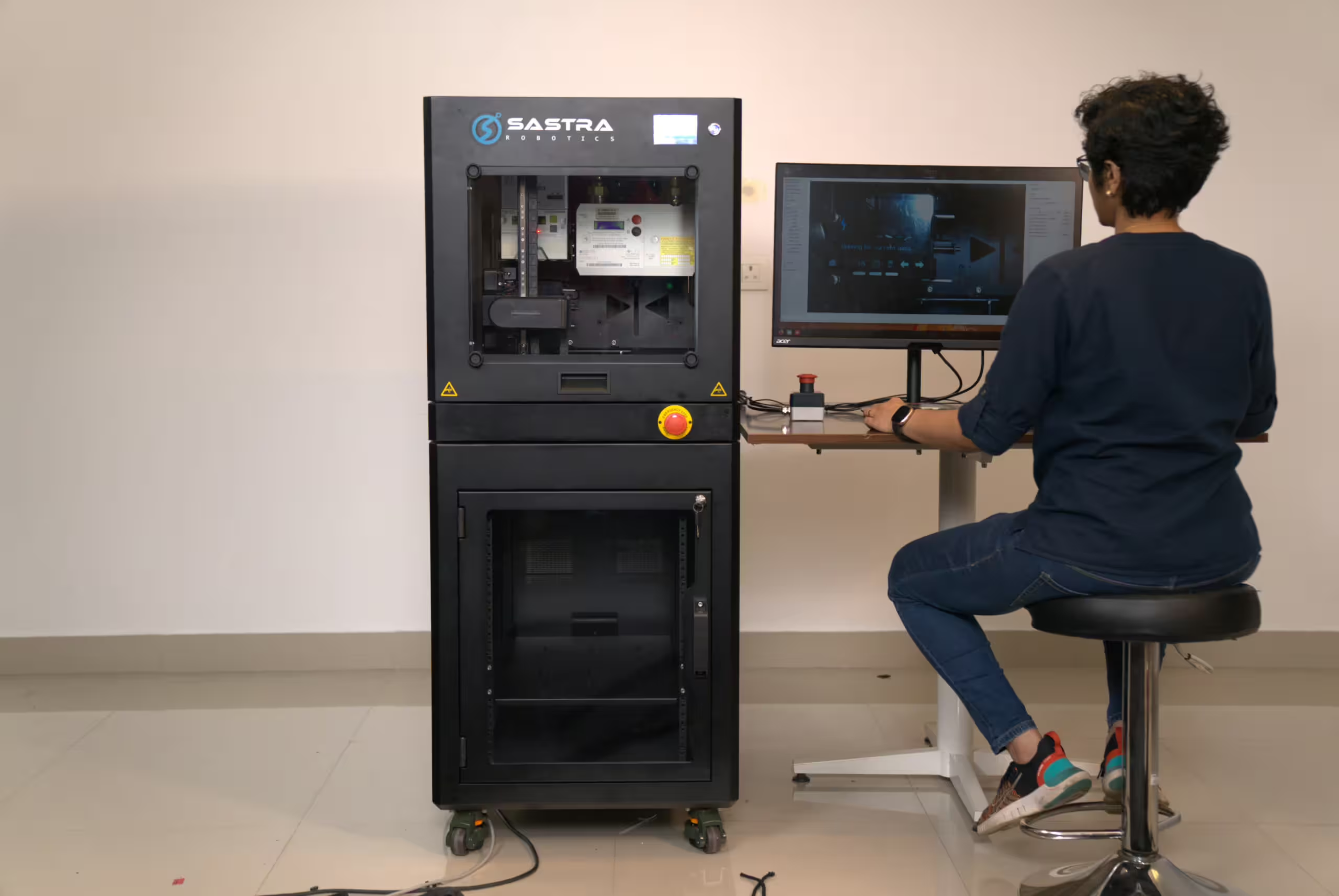
These systems replicate how real users behave but with zero errors, 24/7 uptime, and far more data.
Robotic testing captures subtle lags, misfires, or signal delays that manual testers may overlook. In complex consumer electronics, where split-second responses define quality, this consistency is essential and no longer optional.
Looking Ahead: Smart Tech Needs Smarter Testing
As AI in consumer electronics continues to expand, so does the demand for smarter, more adaptive testing methods. Tomorrow’s wearables, smart displays, and embedded systems will require validation that adjusts in real-time and scales without delay.
At SGBI, we believe robotic automation is more than speed; it’s about precision, consistency, and future readiness. Using platforms like Quaco Studio, we simulate human interaction, uncover hidden defects, and fine-tune every layer of the user experience.
Smart robots are no longer the final step in production. They now shape product performance from within the development cycle itself. This inside-out transformation is already redefining how the most advanced technology reaches the market.
Connect with SGBI to learn more!

